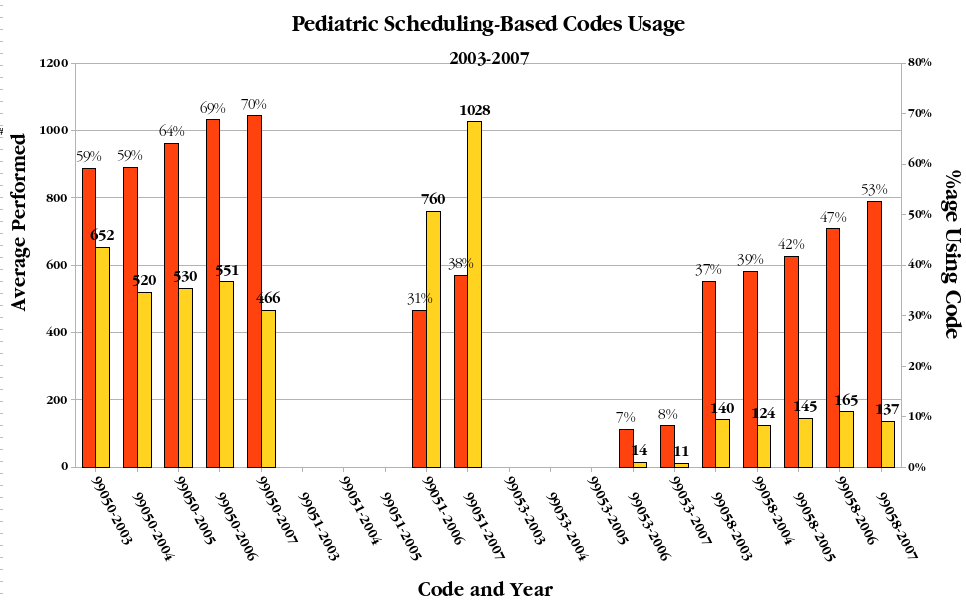In 2008, the CPT definition of the classic "after-hours" codes changed. Gone is all the rigmarole about whether your hours are "posted" or whether your patients know you are open on weekends and all the other commentary that used to convince our clients not to use these important codes. The bottom line: if you see patients in any of the following circumstances, there is an add-on code that you should be using:
- Any patients seen "after normal business hours" (definition below)
- Any patients seen in the evening (8pm and later)
- Any patients seen on a weekend
- Any patients seen on a holiday (definition below)
- Any patient seen between 10pm and 8am if you are open 24 hours
- Any patient who is forced into your appointment schedule (definition below)
"Oh, the insurance companies never pay for these codes," I hear the complainers saying. Baloney. I am going to post some surprising reimbursement data later, but I wanted to start with the 2008 changes. These codes are no longer confusing, they are really simple.
What does "after hours" mean? For me, it's easy - when do the insurance companies stop taking your calls about their bad claims? 4:30? 5:00pm? 5PM IS AFTER NORMAL BUSINESS HOURS. If you regularly see kids after 5pm, every one of them ought to walk out of your office with a 99050 attached to the E&M/Well Visit. Remember, you are saving the inscos tens-of-thousands of dollars a year by providing this service (I'd put it at $300 a visit). Stop being a wimp.
What is a holiday? At the very least, it's the official list of "bankers' holidays" for your state. Here is a list of Federal Holidays - note that it doesn't include things like MLK Day (that's an enlightened state thing) and any of the Jewish holidays. This is the only grey-area in this arena, imo - if the physicians and patients in your area happen to celebrate Yom Kippur, for example, I'd bill an extra code for patients you see during that time. If every one else is working, though, it's a hard sell. Celebrating Election Day or Inauguration Day or Halloween or May Day - not so much.
Finally, patients forced into your schedule. This really is obvious 99% of the time - if the treating the patient in question disrupts your existing schedule then you are on the board. Walk-ins who pop into your sick blocks don't count. The mom who insists on being seen today for an hour in your waiting room doesn't count. These are for the accidents who rush in the door and the asthma attacks who pull you out of the room you are in.
Great, these are easier to use now...give me some real info. I'm going to tease you and hold off on the $$ until next time, but get this:
 I realize it's tough to read, so click here or on the picture for more detail.
I realize it's tough to read, so click here or on the picture for more detail.
What do we learn? I'm sorry for the complexity of the graph, but we see that each valid code schedule-based code (99050, 99051, 99053, 99058) is used by more and more PCC clients every year with a fairly steady volume. In my next episode, I'll show you the money!
Comments
0 Comments